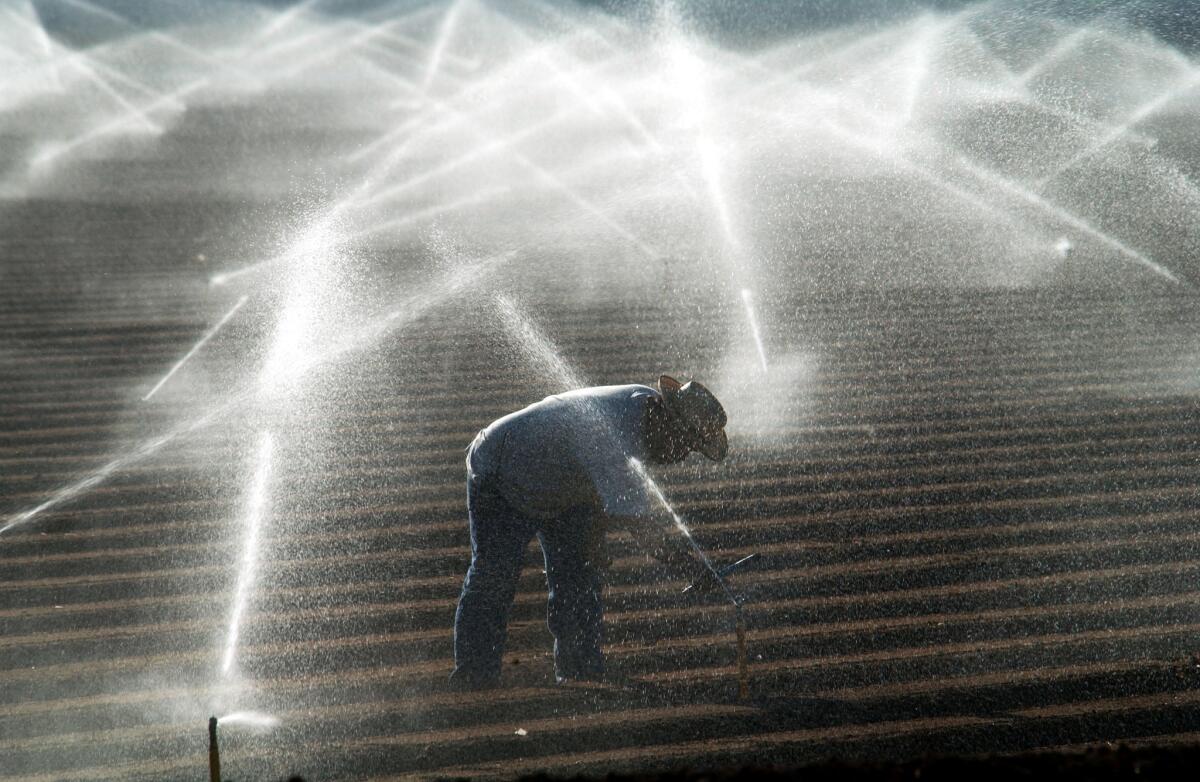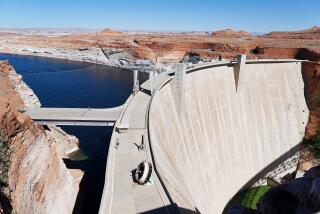As Colorado River drought worsens, water officials parley

SAN DIEGO - Amid a worsening drought along the Colorado River, 40-plus water agency officials, environmentalists, farmers and Indian tribal leaders from the seven states that depend on the river for survival are gathered here for a âmoving forwardâ meeting called by federal officials.
Last year was dry; this year is even worse, officials said.
If the trend continues, Lake Powell and Lake Mead, the Colorado Riverâs two giant reservoirs, will be at 45% capacity by yearâs end, their lowest since 1968. Shortage looms.
âHydrologically, weâre not going in the right direction,â Michael Connor, commissioner of the Bureau of Reclamation, said in advance of Tuesdayâs meeting.
The strategy to avoid cutbacks, officials said, lies in conserving more water in cities, suburbs and farms without resorting to the political bickering and legal fights that have marked the riverâs recent history.
The federal government in December released the results of a three-year study warning that drought, climate change and population growth are fast outstripping the water supply from the Colorado River. The report found a âtroubling trajectoryâ of rising demand colliding with a shrinking supply.
The river provides for the daily needs of 40 million people, including in the thirsty cities of Los Angeles, San Diego, Denver, Las Vegas and Phoenix, and for farmers and ranchers in western states who need water to irrigate 4 million acres of cropland where 15% of the nationâs food supply is grown.
The December report and its âcall to actionâ cannot become âa study that just sits on a shelf,â said Anne Castle, assistant Interior secretary for water and science.
Three committees, to be announced Tuesday, are being formed: One will involve municipal water agencies, a second will deal with agriculture, and a third will have representatives of environmental groups.
An official from the Imperial Irrigation District, the largest user of Colorado River in the nation, has agreed to serve as co-chair of the agriculture committee, along with a professor and a Bureau of Reclamation official.
But that does not signal that the district, which is already selling water to San Diego in the largest sale of farm water in the nation, is eager to sell more water or see more acreage left fallow.
Imperial district farmers are fallowing 36,000 acres, soon to increase to 40,000, in order to save enough water to sell to the San Diego County Water Authority and to replenish the imperiled Salton Sea.
âI tell people: We gave at the office,â said Tina Shields, Colorado River resources manager for the irrigation district. âWe like to farm. I donât think anybody down here is going to volunteer for more transfersâ [sales].
Bottom line: The move forward will not be easy if planners envision more water sales from the Imperial Valley. The contract for the Imperial Irrigation District to sell water to San Diego was signed only after arm-twisting by the federal government and remains hugely unpopular among Imperial Valley farmers and officials.
Still, there is some guarded optimism that getting various âstakeholdersâ together to discuss a common problem will be helpful.
Speaking of the farmers, Connor said there has been âmore active dialogue over the last few months than weâve had recentlyâ¦. Weâre encouraged by that participation; itâs absolutely critical.â
Last year, for example, Imperial Irrigation District officials boycotted the signing of a pact between the U.S. and Mexico that could lead to building a âturnoutâ from the All-American Canal at Calexico to take Colorado River water south of the border.
Now, Imperial Irrigation District officials are discussing the possibilty of such a project with federal officials, although they have yet to give their approval.
The Colorado is frequently listed by the Washington, D.C.-based American Rivers environmental group as among the nationâs most troubled waterways. Gary Wockner, campaign coordinator of the Save the Colorado group, said he will be closely monitoring the environmental committee.
Wockner said he wants to see that the âmoving forwardâ approach âprovides hope for both the ecological health of the river and the millions of people who depend on it.â
More to Read
Sign up for Essential California
The most important California stories and recommendations in your inbox every morning.
You may occasionally receive promotional content from the Los Angeles Times.










